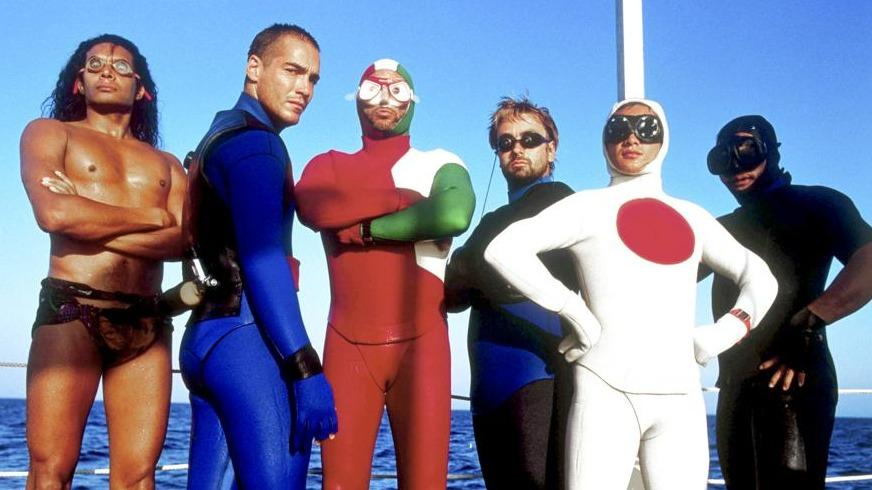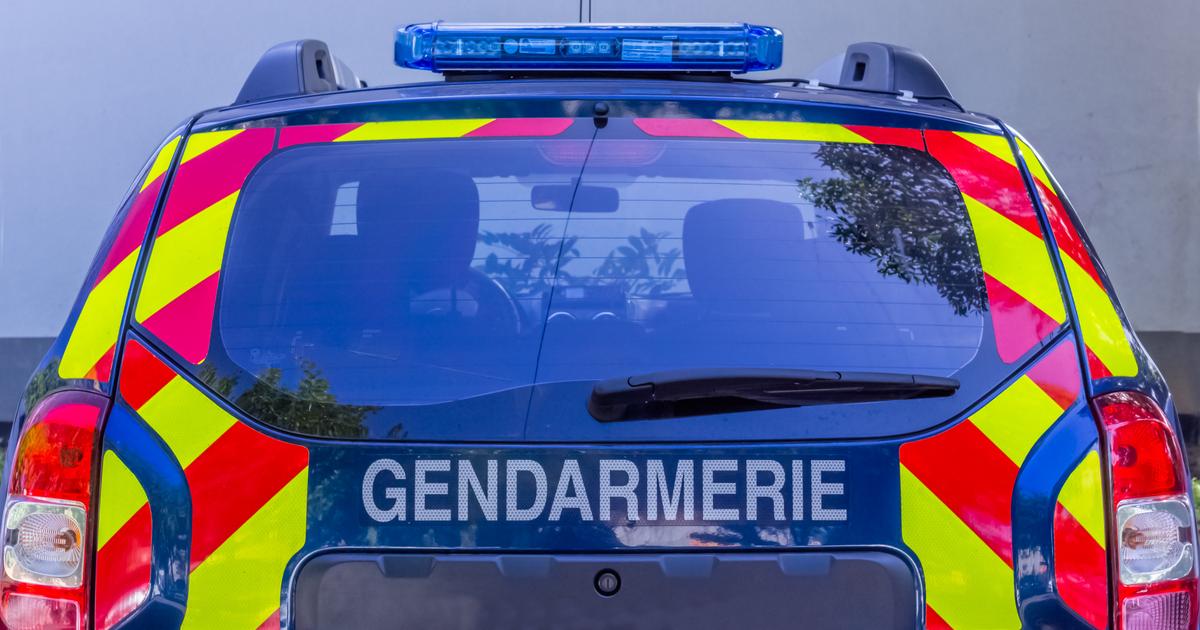1988. The France has just re-elected François Mitterrand for a second seven-year term. Summer is approaching, soaring music leads you to follow and not let go of the movement of a camera brushing the surface of the water before diving into the ocean. The Big Blue is released on the screens. A fictional work directed by Luc Besson, the film is inspired by the story of two freedivers, the Frenchman Jacques Mayol (played by Jean-Marc Barr) and the Italian Enzo Maiorca (played by Jean Reno). The latter, who does not recognize himself in the painting of his character, will sue for defamation, and the film will remain banned in Italy for fourteen years.
Beyond the personal quarrels and the initially mixed reception of critics at the Cannes Film Festival that year, the film quickly becomes generational. The soundtrack of composer Eric Serra is the best-selling in the world; Apnea is no longer just a sport but seduced by its philosophical dimension; The underwater images are put at the service of a narrative... Thirty-five years later, the same Eric Serra is touring with a cine-concert of the Big Blue throughout the France. The public is conquered. The 45-60 year olds come with their families with their children, the transmission operates.
In video, The Big Blue, the trailer
New challenges
Today a great photographer of the underwater image, Alexis Rosenfeld began his career and met Jacques Mayol at Les Goudes, in Marseille. He insists on the very innovative side of the image of the film for the time. "It is complicated to embody the ocean, to show it and tell it differently. Luc Besson brought another representation. Until then, Commander Cousteau defended the exploratory dimension, the discovery of the depths, the possibility of constantly pushing the limits... But the real contribution of this fictional scenario was to show another form of relationship to the sea, going beyond the notions of competition and combat, to reveal the true objective of this snorkeling, namely: sharing."
Jean-Marc Barr in immersion. Collection Christophel Gaumont / Les Films du Loup / Patrick Camboulive
The emotion of the sea
As far as technical processes are concerned, it is difficult to imagine today, when digital technology has developed underwater documentaries, the challenge taken up at the time. "The Big Blue was like a call board for us photographers," continues Alexis Rosenfeld. On the technical side, I could not understand how the cameraman, Christian Petron, had managed certain plans. I was inspired by him afterwards, his way of filming between dog and wolf, his contributions in terms of lighting. "
Roberto Rinaldi, one of the greatest underwater directors, confirms: "Christian Petron has completely reinvented the way of filming by forgetting what was done before. The fact of shooting in 16 mm reinforced the narrative dimension, there were only twelve minutes in the box, so the film was built in sequences. [...] The film opened a door. Cousteau already told us "We don't film excuses", which meant that each image had to tell something. Besson managed to translate emotion, with a human dimension. The competition in the film does not pit the two protagonists against each other, but each of them with the sea. The two men had two different visions, but shared the same passion. This philosophy side of the sea has remained in the minds of freedivers. They were no longer only in performance, but in a true communion with water and depth."
Actors Marc Duret and Jean Reno (in uniform) on the set of Le Grand Bleu. Collection Christophel Gaumont / Les Films du Loup / Patrick Camboulive
Good vibes
When producer Gérard Drouot proposed a few years ago to Eric Serra to dive back into Le Grand Bleu through a cine-concert, the composer was, at first, not very enthusiastic. "I didn't see the concept. For me, the audience watched the film or the orchestra, but not both. However, my good education taught me to question myself, and I have not regretted it! Everywhere, it's a full house. It adds an awesome level of emotion. I don't usually go back, but I was passionate about everything. I was the archaeologist of my own pyramid. By listening again track by track, I rediscovered a spontaneity and imperfections specific to the work of the beginnings, we were 26-27 years old. It's even changed the way I compose since then."
Luc never spoke to me in musical terms, but he asked me to bring emotions, feelings, and we understood each other, with something miraculous.
Eric Serra
Just as the image of the film was at the service of this two-part communion with the ocean, the music gave all their relief to the emotions. It invaded the screen. "We were the generation of the music video, the music in the films was very highlighted, recontextualizes Eric Serra. When a director meets a composer, it is a bit like a Plutonian coming into contact with a Venusian: one sees images and the other feels with his ears. Luc never spoke to me in musical terms, but he asked me to bring emotions, feelings, and we understood each other, with something miraculous." In the musical landscape of the time, these soaring sounds created a rupture. "I remember that when I was writing, I wondered a little what I was doing, I felt against the current. I still follow my emotions, but here, I was not in the movement of the moment. The beginnings of digital had hardened the sounds, everything that came out was more violent, more aggressive, and I was doing the opposite, I was going the other way. That's probably why it worked. This sweetness stuck with the film and made people feel good. And it continues."
The film's director, co-writer and co-producer, Luc Besson (centre), with members of the film crew. Collection Christophel Gaumont / Les Films du Loup / Patrick Camboulive
Apnea and the boom of spirituality
Umberto Pelizzari, apnea champion par excellence of the 1990s, is the man of all records. He still trains every day, even though he stopped competing almost twenty years ago. In 1991, when he had just won a world championship and was training with Mayol on the island of Elba, twenty-one teams of journalists arrived to film them... "There was no more room on the boat. My assistant's name was Roberto, so obviously everyone was shouting at him with a 'Roberto, mio palmo!', like in the movie," he recalls, always amused. The spiritual dimension of apnea is, since then, one of the legacies of the Big Blue.
For freedivers, Le Grand Bleu was a bit like Top Gun for future drivers. Even someone who had never practiced wanted to taste this sensation.
Umberto Pelizzari
"I often ask my students why they practice," says the man who now runs a school and gives lectures on the subject. One day, a man replied: "I drive long distances for work. Freediving gives me the same feeling as opening a window wide to renew the air." It is this benefactor dimension that we discovered with Le Grand Bleu. For freedivers, this movie was a bit like Top Gun for future pilots. Even someone who had never practiced wanted to taste this sensation." The popularity of apnea has been growing ever since. In recent years, it is in Asia (South Korea, Japan, Taiwan, Singapore, China, Hong Kong) that amateurs are more and more numerous, especially among women. The latter see in the discipline the aesthetic and graceful side of dance, an almost choreographic aspect embodied today by the director Julie Gautier, former champion of France apnea, turned director, author of the film Ama.
Filmed notably on the Greek island of Amorgós, Le Grand Bleu (here Jean-Marc Barr) also highlights dolphins. Collection Christophel Gaumont / Les Films du Loup / Patrick Camboulive
Amorgós and holidays in Greece
It was, of course, not Luc Besson alone who created a transhumance of the French to the islands of the Cyclades, but as a young woman of the Big Blue generation confides: "With a father from southern Italy and a Spanish mother, I found the atmosphere of summers with my family, the sun, the cutting of the rocky coasts..." Amorgós, one of the two main settings in Greece, continues to bring to life the Big Blue spirit of the beach of Agia Anna, below the monastery of Chozoviotissa, with its famous shipwreck. Every year, since 2017, a freediving competition is organized there, the Authentic Big Blue.
Éric Serra replays the music of the Big Blue: on July 22 at the Pinède Gould, in Juan-les-Pins, on July 23 at the Ancient Theater of Vienna, and on August 31 at the Pellicu-live Festival, in Thuir (Pyrénées-Orientales). legrandbleu-cineconcert.fr









